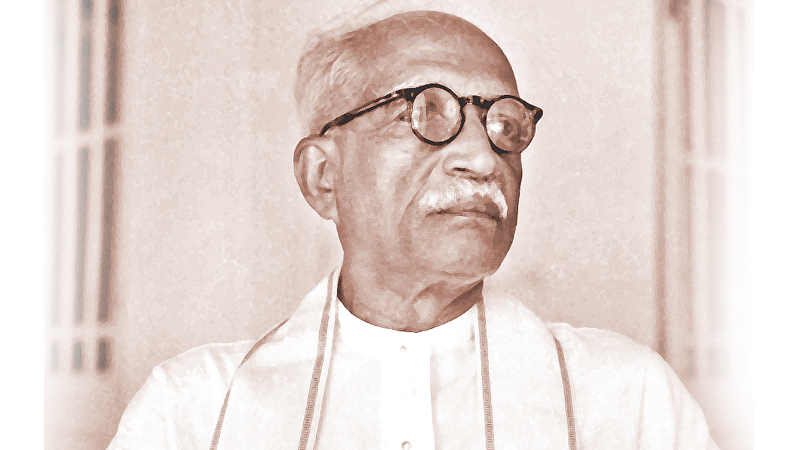by Farzana Haniffa
The National Education Policy Framework, (NEPF) the latest in a series of misdirected government interventions to reform education, has by now been roundly critiqued and hopefully no longer relevant. (For a critique of NEPF in this column see Ramya Kumar’s Kuppi of March 19 2024). The Parliament’s Sectoral Oversight Committee on Education (SOCE) has made useful observations on the language with which the policy is framed and expressed a lack of agreement on many of its recommendations.
The SOCE has asked that the NEPF include four guiding principles on which reforms are to be formulated: that free education as a principle will not be compromised, that education be recognized as a fundamental right, that equity and social justice be the overarching norm and standard that will govern the NEPF and all reforms, and, especially important today, the principle that education will only be effective when students have their basic needs fulfilled. These framing ideas reflect some of the values long informing education reform in the country that arguably the NEPF has paid only the most perfunctory attention. The SOCE interventions also recognizes that the country is facing its most socially debilitating economic crisis to date. It has deferred decisions on certain contested elements of the recommendations, including on restructuring higher education (HE) funding and doing away with the University Grants Commission (UGC). Overall, the select committee process seems to have enabled some rare thoughtful input to policymaking from Parliament.
While we can heave a sigh of relief that the NEPF will have to be reformulated, it is perhaps worth looking at some of the ideas that informed the NEPF process and draft. Dr. Sujata Gamage, one of the main public advocates of the NEPF, and a member of the drafting committee, has been pushing two connected ideas regarding education funding for several years now. Dr. Gamage’s writings and public appearances have put forward a critique of how we spend our education allocation in the country. Her principle claim is that our spending on HE relative to primary and secondary education, is too high. Dr. Gamage argues that we should therefore realign our education budget to reflect a greater emphasis on primary and secondary education that serves a larger segment of the population and has a greater ‘return on investment’(ROI). Dr. Gamage also claims that our spending on HE only yields individual ROI and does not yield an adequate social ROI, defined by her as the amount of tax that a person benefitting from HE pays back to the government. Given these two issues, Dr. Gamage advocates that the state should no longer increase its investment in HE and instead encourage private investment. Dr. Gamage also states that government support continues to be provided for HE only because self-interested public university students and teachers, together with other trade unions, engage in vilifying private investment in HE. These ideas are scattered throughout the NEPF as part of its framing language. (My characterization of Dr. Gamage’s position is drawn from her submission to the select committee in Parliament on expanding higher education opportunities, her conversation with Sonali Wanigabaduge on the News First TV programme The People’s Platform, and her columns in The Financial Times in 2021.)
I would like to propose a critique of Dr. Gamage’s position while asking the following questions. Given that education spending in Sri Lanka is abysmally low across all sectors, why are we not calling for an increase in education spending in general? Why are we calling for more spending for school education while cutting HE funding? Does the current research on ROI and global policy on education really support such a position? And a question for another column, why is a critique of private investment in for-profit higher education not included in this discussion?
The discussion on ROI emerges from the theorization of education as the amassing of ‘Human Capital.’ Starting in the 1960s, economists Shultz, Becker and Minzer understood education spending as an investment, correlating years in education with improved earning capacity. The term Human Capital coined by economists initially referred solely to the monetary benefit brought both to the individual and society through education. ROI in education emerges from this discussion on human capital where a calculation is made with regards to the cost of education, and in the case of further education, the loss of earnings during the time of education compared with the earnings increase after completing one’s education. ROIs are discussed in terms of individual and social returns (SROI) and they are calculated differently. The Human Capital approach is fully integrated into the education policy discussion and has become the only way in which education is spoken about by powerful actors in the education sector. The World Bank has invested heavily, globally in the discussion. See https://www.worldbank.org/en/publication/human-capital. As Niyanthini Kadirgamar has discussed recently, there are many critiques of the claims of the Human Capital model and its continued use has required the addition of several qualifications.
The conversation in Sri Lanka on SROIs in education emerges from policy positions adopted by the World Bank based on the writings of George Psacharapoulos. Kaushalya Perera has traced the World Bank’s engagement with the concept of ROI in education to two review publications, one by Psacharapoulos (1985) and another by Psacharapoulos and Patrinos (2018). (See https://simplifyresearch.wordpress.com/2023/04/30/rois-in-education-what-are-they/). Psacharapoulos’ 1985 paper that used data from 61 countries concludes “Primary education is the most profitable educational investment opportunity, followed by secondary education.” On this basis Psacharapoulos recommends that states reduce subsidies on public HE and revert the funds to primary education. (He qualifies his 1985 claim by problematically stating that university is generally attended by those who can afford to pay). In the 2018 review including 169 countries, the recommendations are somewhat different as the data now show that while SROI on primary education is still the highest, SROI on tertiary education is significantly higher than SROI on secondary education.
In the aftermath of the pandemic there is a significant emphasis globally on investing in education to ensure equity and social justice as well as to enable people to face the uncertainty of technological change and climate related crises. There is a mainstream recognition, reflected even in the NEPF that learned skills may soon be irrelevant and that individuals should be equipped to ‘reskill’ when necessary and to be engaged in ‘lifelong learning.’ Such a facility can only be cultivated at the tertiary level. For our purposes, what is said in a recent World Bank blog post by Patrinos (co-author of the 2018 report cited above) is revealing. First, it states that the SROI in human capital compared to that of investment in physical infrastructure, is much higher in ‘less developed countries’, and that rate of return-based decision-making benefits low-income, rural and female students in particular. Taking cases of Finland (1970s) and Poland (2000s) as examples, the post suggests that massive and persistent spending on education leads to significant increases in innovation while making growth more inclusive.
The blog claims, crucially that ROI is greatest for tertiary education/HE even in low-income countries. Patrinos also argues that educated youth can make better choices about their future as well as the future of their societies, pointing to evidence of a correlation between education and pro-climate behavior and policy preferences. (https://blogs.worldbank.org/en/education/50-years-after-landmark-study-returns-education-remain-strong#:~:text=But%20education%20is%20more%20than,10%25%20increase%20in%20earnings%20annually.) It is noteworthy that the NEPF’s identification of the problems facing the education sector does not include that of consistent underfunding.
Even within the limited human capital frame, current writing on ROI in education, does not seem to support a position that favours cutting public tertiary/HE spending. Indeed, more recent research highlights the necessity of greater spending on HE. Therefore, any calls for cutting HE spending (as the NEPF does) alongside references to university students as “entitled” can only reflect prevailing ideological positions about our universities as underserving of public support.
Lanka is a country with one of the lowest figures for public expenditure on education as a percentage of GDP, as various interlocuters, including Dr. Gamage, note. The entire education sector is severely underfunded, and schools and universities are scrambling to survive. We are therefore in need of urgent and substantial reform and support. Given however, that our free education system has long served as a necessary conduit for social mobility for our population, we should be extremely suspicious of any attempt to “restructure” it. We should be especially suspicious when the proposed policy changes barely acknowledge underfunding as foundational to the problems in our education system, and claim cutting funding further as being for the greater good. At a time when equity and social justice are being prioritized even by the World Bank, it behooves us to try and preserve the positives features of our existing system before proposing drastic changes.



